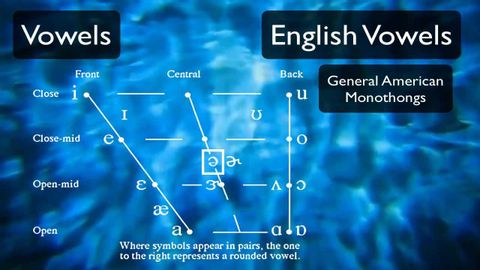
字幕與單字
發音教程3:英語元音和國際音標。 (Pronunciation Tutorial 3: English Vowels and the International Phonetic Alphabet)
00
Kevin Lin 發佈於 2021 年 01 月 14 日收藏
影片單字
close
US /kloʊz/
・
UK /kləʊz/
- adj.接近的;(關係)密切的;親密的;接近;;近的;接近的;悶熱的;勢均力敵的
- v.t./i.接近;結束;終止;截止;關閉;完成;封鎖
- adv.靠近地
- n.結束
A1 初級初級英檢
更多 back
US /bæk/
・
UK /bæk/
- adj.後面的;後部的
- v.t.(賽馬等)下賭注於;打賭;支持
- n.椅背;後面;背後;後面;背部;背脊
- v.i.倒後
- adv.返回;退回;回來
A1 初級多益初級英檢
更多 leave
US /liv/
・
UK /li:v/
- v.t./i.離開;別離;死後留下;使保持(某狀態);沒有吃完(或用完);遺留;使…成為
- n. (u.)允許;同意;假;休假
- n. (c./u.)剩菜
A1 初級多益初級英檢
更多 使用能量
解鎖所有單字
解鎖發音、解釋及篩選功能
